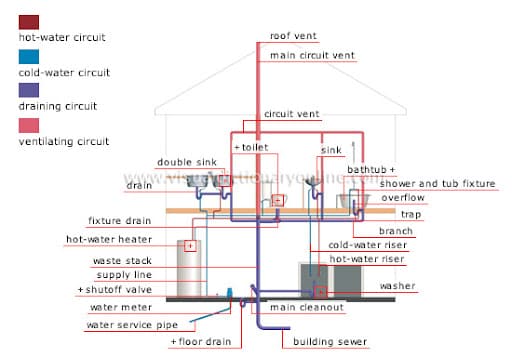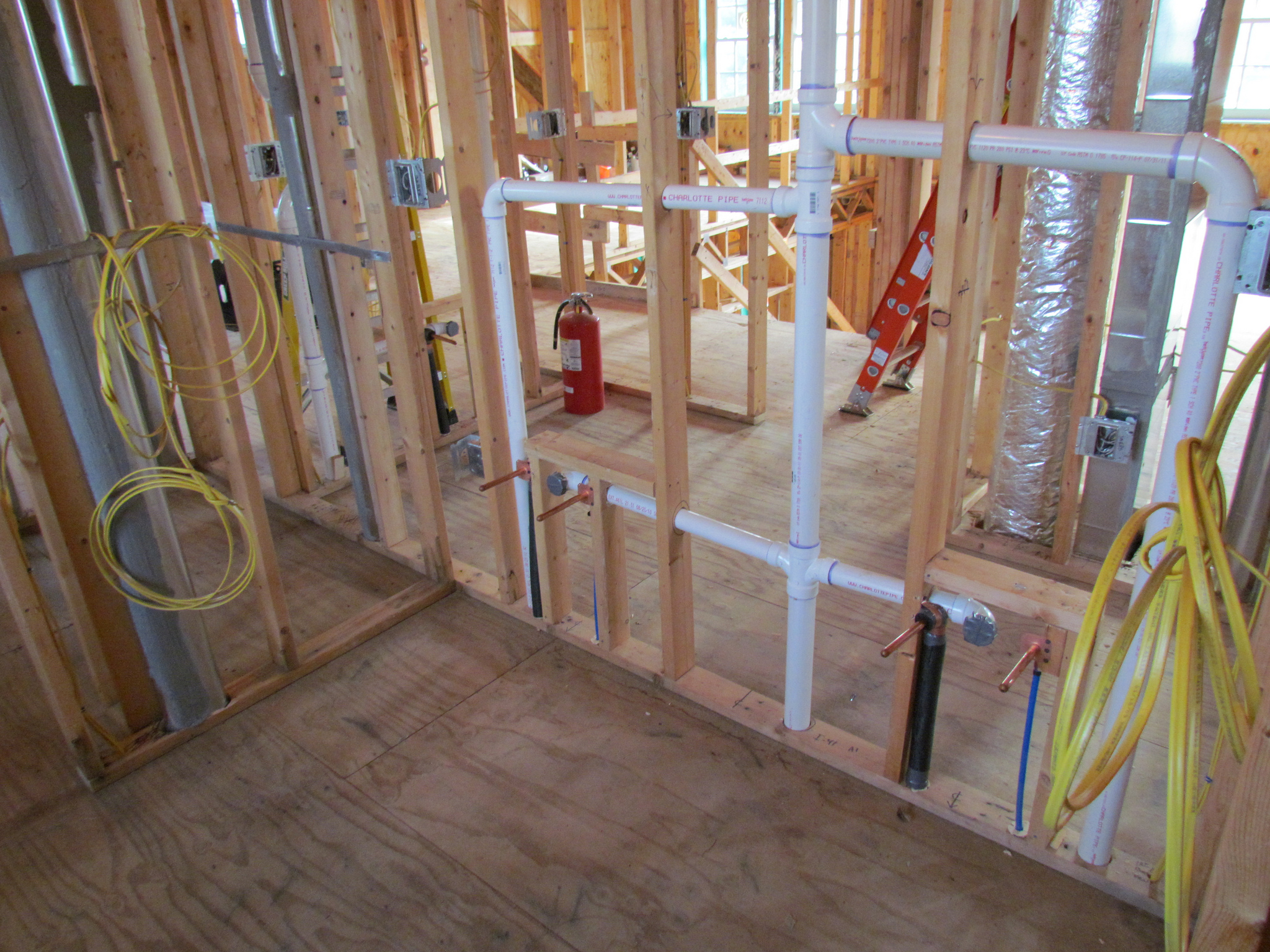This post listed below in relation to Understanding Your Home's Plumbing Anatomy is amazingly entertaining. Give it a go and draw your own results.

Recognizing exactly how your home's plumbing system functions is important for each homeowner. From providing clean water for alcohol consumption, food preparation, and bathing to securely removing wastewater, a properly maintained pipes system is important for your family's health and convenience. In this comprehensive overview, we'll explore the complex network that composes your home's plumbing and deal suggestions on upkeep, upgrades, and taking care of common problems.
Intro
Your home's pipes system is more than just a network of pipes; it's a complicated system that guarantees you have accessibility to clean water and efficient wastewater removal. Understanding its elements and just how they interact can help you avoid expensive repair services and guarantee every little thing runs smoothly.
Fundamental Elements of a Plumbing System
Pipes and Tubes
At the heart of your pipes system are the pipes and tubing that bring water throughout your home. These can be constructed from numerous materials such as copper, PVC, or PEX, each with its advantages in regards to resilience and cost-effectiveness.
Fixtures: Sinks, Toilets, Showers, and so on.
Components like sinks, commodes, showers, and tubs are where water is made use of in your home. Comprehending just how these components connect to the pipes system aids in identifying troubles and planning upgrades.
Shutoffs and Shut-off Factors
Valves manage the circulation of water in your plumbing system. Shut-off shutoffs are important throughout emergencies or when you need to make repair work, enabling you to separate parts of the system without disrupting water circulation to the whole house.
Supply Of Water System
Main Water Line
The primary water line attaches your home to the community water system or an exclusive well. It's where water enters your home and is dispersed to different components.
Water Meter and Stress Regulatory Authority
The water meter actions your water use, while a stress regulatory authority makes certain that water flows at a safe pressure throughout your home's plumbing system, preventing damage to pipes and fixtures.
Cold Water vs. Hot Water Lines
Understanding the difference in between cold water lines, which provide water straight from the primary, and warm water lines, which bring warmed water from the water heater, assists in fixing and planning for upgrades.
Drainage System
Drain Pipes and Traps
Drain pipes lug wastewater far from sinks, showers, and commodes to the sewage system or sewage-disposal tank. Traps prevent sewer gases from entering your home and also catch particles that might trigger blockages.
Ventilation Pipes
Air flow pipelines enable air into the drainage system, preventing suction that could reduce water drainage and trigger traps to empty. Correct air flow is necessary for preserving the integrity of your plumbing system.
Relevance of Correct Drain
Guaranteeing correct drain avoids back-ups and water damage. Routinely cleaning drains pipes and preserving traps can prevent pricey repair services and extend the life of your plumbing system.
Water Furnace
Kinds Of Water Heaters
Water heaters can be tankless or conventional tank-style. Tankless heating systems warm water as needed, while containers keep warmed water for instant usage.
Just How Water Heaters Attach to the Pipes System
Comprehending how hot water heater link to both the cold water supply and hot water circulation lines assists in detecting issues like inadequate hot water or leaks.
Upkeep Tips for Water Heaters
Regularly flushing your hot water heater to get rid of sediment, inspecting the temperature level settings, and checking for leakages can extend its life expectancy and boost power efficiency.
Usual Plumbing Concerns
Leaks and Their Reasons
Leaks can take place due to aging pipes, loosened installations, or high water stress. Dealing with leakages without delay prevents water damage and mold and mildew development.
Obstructions and Blockages
Blockages in drains pipes and commodes are frequently triggered by purging non-flushable things or an accumulation of oil and hair. Making use of drain displays and bearing in mind what drops your drains pipes can prevent clogs.
Indications of Plumbing Problems to Look For
Low tide stress, slow-moving drains, foul odors, or abnormally high water bills are indications of possible plumbing problems that must be addressed quickly.
Pipes Upkeep Tips
Normal Examinations and Checks
Set up annual plumbing inspections to catch issues early. Search for signs of leaks, rust, or mineral accumulation in faucets and showerheads.
DIY Maintenance Tasks
Easy tasks like cleaning faucet aerators, checking for toilet leaks using dye tablets, or insulating subjected pipelines in cool environments can prevent major plumbing problems.
When to Call a Specialist Plumbing Professional
Know when a plumbing problem requires professional competence. Trying intricate repair services without appropriate knowledge can cause even more damage and higher repair work costs.
Updating Your Pipes System
Factors for Upgrading
Upgrading to water-efficient fixtures or changing old pipelines can enhance water high quality, reduce water bills, and raise the worth of your home.
Modern Plumbing Technologies and Their Benefits
Check out innovations like smart leakage detectors, water-saving commodes, and energy-efficient hot water heater that can save money and minimize ecological influence.
Expense Considerations and ROI
Compute the ahead of time prices versus long-lasting savings when thinking about plumbing upgrades. Several upgrades pay for themselves through lowered energy bills and less repair services.
Environmental Impact and Preservation
Water-Saving Components and Appliances
Mounting low-flow taps, showerheads, and toilets can dramatically minimize water usage without giving up performance.
Tips for Reducing Water Use
Easy behaviors like taking care of leaks without delay, taking shorter showers, and running complete tons of washing and meals can conserve water and reduced your utility costs.
Eco-Friendly Plumbing Options
Take into consideration sustainable pipes materials like bamboo for floor covering, which is durable and environment-friendly, or recycled glass for countertops.
Emergency Readiness
Steps to Take Throughout a Pipes Emergency
Know where your shut-off shutoffs are located and just how to switch off the supply of water in case of a ruptured pipe or significant leak.
Significance of Having Emergency Situation Get In Touches With Convenient
Keep contact details for regional plumbings or emergency solutions readily offered for quick response during a plumbing dilemma.
Do It Yourself Emergency Fixes (When Suitable).
Momentary fixes like utilizing air duct tape to spot a leaking pipeline or placing a pail under a dripping tap can reduce damages up until an expert plumbing technician shows up.
Conclusion.
Recognizing the anatomy of your home's plumbing system encourages you to preserve it effectively, conserving time and money on repair services. By adhering to regular maintenance regimens and remaining informed regarding modern-day pipes technologies, you can ensure your pipes system operates effectively for years to find.
Exploring Your Homes Plumbing Anatomy
Water Supply System
Main Water Line: This is where water enters your home from the municipal supply or a private well.
Water Meter: Typically located near where the main water line enters the property, it measures the amount of water used.
Shutoff Valve: It s crucial to know where this is in case of emergencies. It allows you to turn off the water supply to the entire house.
Pipes and Fittings: These distribute water throughout your home. Materials can include copper, PVC, or PEX.
Drain-Waste-Vent (DWV) System
Drains: Located in sinks, showers, and tubs, these carry wastewater away.
Traps: U-shaped pipes under sinks that hold standing water, blocking sewer gases from entering the home.
Vents: Pipes that lead from the DWV system to the outside, preventing vacuum formation and allowing gases to escape.
Sewer Line: Carries all wastewater from the home to the municipal sewer system or a septic tank.
Fixtures and Appliances
Sinks, Toilets, and Showers
Dishwashers and Washing Machines
Water Heaters
Maintenance Tips
Regularly check for leaks in exposed pipes and around fixtures.
Inspect the water heater annually for signs of wear.
Clean drains and traps to prevent clogs and odors.
Know how to shut off water to individual fixtures.
When to Call a Professional
Major leaks or burst pipes
Installation of new pipes or fixtures
Septic tank issues
Remodeling projects that involve plumbing changes
Conclusion
Understanding the anatomy of your home's plumbing is key to maintaining a functional and efficient system. Regular checks and knowing when to call in the experts can save you time, money, and stress.
https://www.mavyn.com/blog/exploring-your-homes-plumbing-anatomy

Exploring Your Homes Plumbing Anatomy
Water Supply System
Drain-Waste-Vent (DWV) System
Fixtures and Appliances
Maintenance Tips
When to Call a Professional
Conclusion
Understanding the anatomy of your home's plumbing is key to maintaining a functional and efficient system. Regular checks and knowing when to call in the experts can save you time, money, and stress.
https://www.mavyn.com/blog/exploring-your-homes-plumbing-anatomy
I ran across that entry on Plumbing Installation 101: All You Need to Know while doing a lookup on the search engines. Loved our blog entry? Please share it. Help other people locate it. I love your readership.
Click Here To Read More